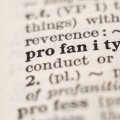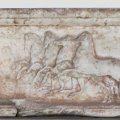Olivia Newton-John has a lot to answer for. Even now, after 35 years has passed, it is hard to forgive her for her role in Xanadu, a film consistently voted as the worst film of 1980.
This is quite an achievement given that its competition included You Can’t Stop the Music, a pseudo-biopic of the Village People that starred Bruce Jenner in an ought-to-be-illegal crop top and hot pants combination and Blue Lagoon, Brooke Shield’s soft-porn island romp, which did for Fijian tourism what 50 Shades of Grey has done for the sale of handcuffs.
Xanadu tells the story of a goddess sent down from Mt. Olympus to help a struggling spray-paint artist fulfil his dream of opening a roller-disco with Gene Kelly. As a plot summary, it is hard to beat.
When it is not murdering the audience’s ability to suspend disbelief, the film takes time to commit various crimes against fashion and hairdressing. But its greatest sin is that Xanadu represents the end point of one of the most productive, fulfilling, and vital mythical relationships in western culture, the relationship between an artist and his Muse.
After Xanadu it was never possible to take the Muse seriously again.
Newton-John plays Terpsichore, the Muse of Dance.
Eight other Muses get cameo appearances, thereby confirming a canonical number that has been standard since the Renaissance. Along with dance, we traditionally encounter Muses of epic poetry, history, elegy, lyric poetry, tragedy, hymns, comedy, and astronomy. Later, additions include Muses for the visual arts, law, and music.
In antiquity, they could never agree on the number of the Muses. Sometimes they thought there were three, other times four, still other times nine. Fortunately, there was slightly more consensus on their parentage. One of the great ironies of Greek mythology is that it is the offspring of Zeus’ philandering who prove to be among the most interesting of the gods and goddesses.
Hera was his wife, but the only significant outcome of that relationship was the crazed war-god Ares. In contrast, his affair with Leto produced Apollo and Artemis. His consumption of Metis produced Athena and his dalliance with Mnemosyne, the goddess of memory and patron of the spoken word, produced the Muses.
Xanadu treats in a cavalier fashion what other Ages took deadly seriously. Homer’s Iliad begins, “Sing, goddess, of the anger of Peleus’ son Achilles.” Similarly, the Odyssey opens, “Tell me, Muse, about that clever trickster who wandered far after the fall of Troy.”
These aren’t empty evocations. When ancient Greek poets sang, they saw themselves literally channelling the Gods. Poets became mouthpieces of the Muses, reciting the words that they whispered in their ears.
Part of the appeal of this idea is the added weight and authority it gave to the words of the poet. In a world in which Greek poets competed with rival historians and philosophers to offer an explanation of the “truth” of the world, it was an added benefit to have the goddesses, whether three or nine, on your side. It is a game that we still like to play.
Visit the Library of Congress and you will see America’s unique contribution to Greek mythology.
Towering above you in the Reading Room with a cargo-ship and a locomotive in each of her hands is the Muse of Commerce. Long before the tax structures of Google and Amazon made us realise that business was also able to produce great works of imaginative fiction, iconographers were doing their best to adorn capitalism with a celestial genealogy and stake its position amongst the Arts.
Yet invoking the Muse is more than just a game of prestige. It is also recognition of art’s uncanny ability to speak truths that seem impossible to know. What would it be like to be Odysseus or Hamlet? Only a Muse can truly tell. Great art surprises. It seems to come from someplace else. How else could it come into being, if not borne down from heaven on the back of a goddess?
And here we see the great utility of the myth of the Muse.
The Muse allows us to avoid facing up to one of the great anxieties about the creative process: its inexplicability. Why is genius so hard to replicate? No matter how hard you push a young musician, you can’t turn them into Mozart.
Two artists can go through exactly the same training. One will become Damien Hirst, the other will be entirely forgotten. There is a contingency at the heart of creativity that is deeply unsettling. Artists often seem dumbfounded when trying to explain the origins of their ideas or techniques.
It is so much easier to believe that a divine spirit has been the catalyst for great art than attribute it to chance or fashion.
In the modern world, there are many candidates vying to be a replacement for the Muse. We try to explain creative success through recourse to stories about dealers, promoters, or even arts funding schemes. Biographies of artists attempt to attribute success to formative childhood experiences or complex adult relationships.
Yet ultimately none of our explanations can account for that moment when the Arts speak to us with that sense of transcendent authority, when they allow us to see clearly what had previously only been sketchy, when they allow us to converse with the divine.
This article was originally published on The Conversation.
The views expressed in this article are not necessarily those of The University of Queensland.
.jpg)









